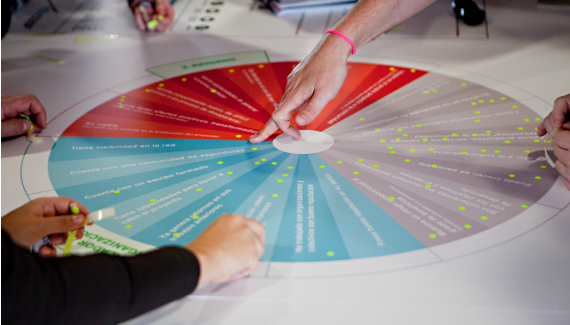At Goteo, we take another step in our commitment to the commons and free knowledge: we join the GenderDataLab.org community and make available an open dataset on the feminist projects that They have gone through Drip.
Thus, we are committed to contributing to closing the gender data gap also in the social and solidarity economy, contributing our bit to publicizing more about the initiatives and impact of projects that promote gender equality and empowerment from a feminist perspective.
Thus, it was on Monday, March 7, that our colleague Tayrine Dias spoke about open data with a gender perspective at Open Data Day, presenting our collaboration within the framework of the principles of data feminism.
Some of the most burning questions that were discussed were how data feminism poses an intersectional critique of the way data science reinforces power and a philosophical reflection on the supposed "neutrality" of the knowledge it produces.
The objective is to focus on gender biases to analyze what the feminist movement can contribute to big data. In that intersection of feminism with race, with gender and sexuality or with colonialism. But at the same time, thinking that these are entire fields of knowledge.
Diversity is essential at all stages: from the infrastructure in the inclusion of women programmers and viewers, to the consumption of this data itself to ensure that the different voices are heard. How to increase that diversity? In software development, for example, there are very difficult dynamics based on power relations that drive out female programmers, and that must change to increase the presence of other genders. Close work with groups like Digital Fems is essential.
One of the most powerful projects is that of datoscontraelruido.org where we can consult the graphs on sexist violence in the Spanish State and discover that 1,901,381 cases have been reported between 2010 and 2021 , resulting in 480 complaints per day.

The task was to rearrange the noise of such collected data to make it useful. What use is its accumulation if there is no way to relate where the complaints come from and in what sentences they result? With this project, these open but cryptic data become useful data with which it is possible to read the situation, propose changes and observe their effectiveness.
Thanks to this tool, we can verify phenomena such as the drop from the average of 20,000 annual complaints to just over 10,000 during the year of confinement due to covid-19. Were there so many women who did not dare to speak out due to the impossibility of leaving their home safely and accessing shelter services?
From here we invite you to view all the presentations, as well as the interesting questions raised by the people attending the event.








 Alex
Alex 

 La Guixeta
La Guixeta